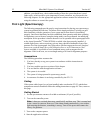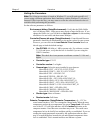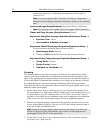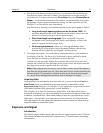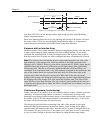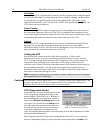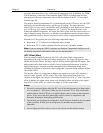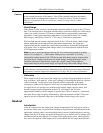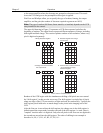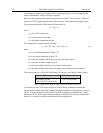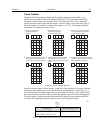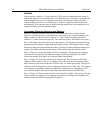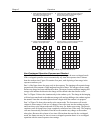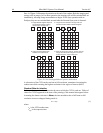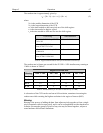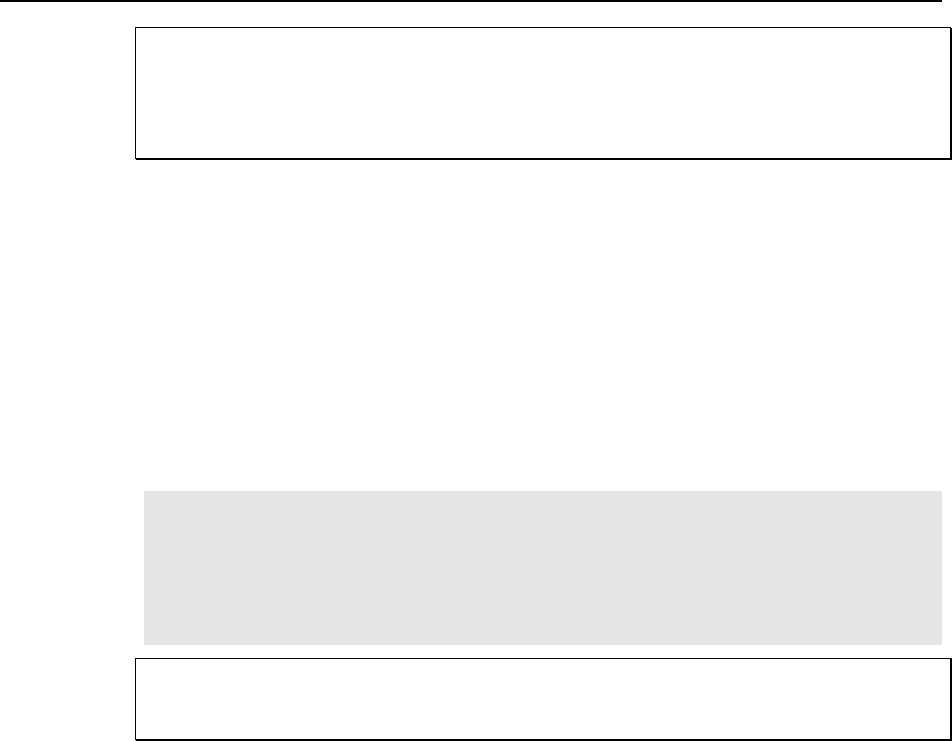
60 MicroMAX System User Manual Version 6.C
If you observe a sudden change in the baseline signal you may have excessive humidity
in the vacuum enclosure of the camera. Turn off the controller and have the camera
repumped before resuming normal operation. Contact the factory Technical Support
Dept. for information on how to refresh the vacuum. See page 164 for contact
information.
Caution
Dark Charge
Dark charge (or dark current) is the thermally induced buildup of charge in the CCD over
time. The statistical noise associated with this charge is known as dark noise. Dark charge
values vary widely from one CCD array to another and are exponentially temperature
dependent. At the typical operating temperature of a round head camera, for example,
dark charge is reduced by a factor of ~2 for every 6º reduction in temperature.
With the light into the camera completely blocked, the CCD will collect a dark charge
pattern, dependent on the exposure tim
e and camera temperature. The longer the
exposure time and the warmer the camera, the larger and less uniform this background
will appear. Thus, to minimize dark-charge effects, you should operate with the lowest
CCD temperature possible.
Note: Do not be concerned about either the DC level of this background or its shape
unless it is very high, i.e., > 1000 counts. What you see is not noise. It is a fully
subtractable readout pattern. Each CCD has its own dark charge pattern, unique to that
particular device. Simply acquire and save a dark charge “background image” under
conditions identical to those used to acquire the “actual” image. Subtracting the
background image from the actual image will significantly reduce dark-charge effects.
If you observe a sudden change in the baseline signal, y
ou may have excessive humidity
in the camera's vacuum enclosure. Immediately turn off the system and contact Princeton
Instruments Customer Support for instructions. See page 164 for contact information.
Caution
Saturation
When signal levels in some part of the image are very high, charge generated in one pixel
may exceed the “well capacity” of the pixel, spilling over into adjacent pixels in a process
called “blooming.” In this case a more frequent readout is advisable, with signal
averaging to enhance S/N (Signal-to-Noise ratio) accomplished through the software.
For signal levels low enough to be readout-noise lim
ited, longer exposure times, and
therefore longer signal accumulation in the CCD, will improve the S/N ratio
approximately linearly with the length of exposure time. There is, however, a maximum
time limit for on-chip averaging, determined by either the saturation of the CCD by the
signal or the loss of dynamic range due to the buildup of dark charge in the pixels.
Readout
Introduction
After the exposure time has elapsed, the charge accumulated in the array pixels needs to
be read out of the array, converted from electrons to digital format, and transmitted to the
application software where it can be displayed and/or stored. Readout begins by moving
charge from the CCD image area to the shift register or to a masked area (or storage cells)
and then toward the shift register. The charge in the shift register pixels, which typically
have twice the capacity of the image pixels, is then shifted into the output node and then



